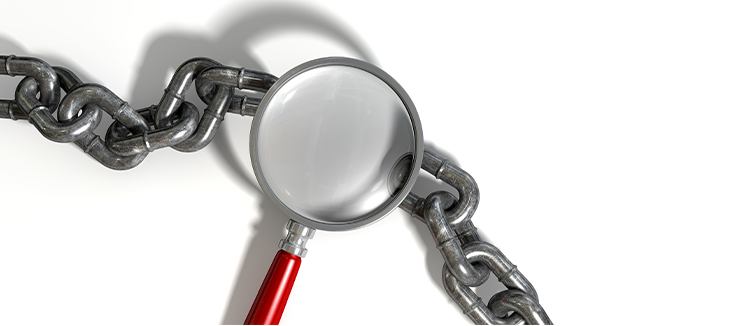Overview
As the leading developer, manufacturer, and marketer of medical devices designed to provide high-level disinfection of ultrasound probes, CS Medical continues to innovate through superior technologies and products. We are committed to providing the best possible solutions for infection prevention that support healthcare professionals worldwide.
CS Medical goes beyond cleaning and high-level disinfection of endocavity, surface and TEE probes, CS Medical believes in managing the quality of care given to delicate ultrasound probes. Our TEE Complete Care® and Complete Probe Reprocessing® offering provides solutions for the healthcare facility to minimize endocavity, surface and TEE ultrasound probe damage and reduce the potential of contaminating cleaned and high-level disinfected probes prior to use. These products address the following areas: bedside cleaning, point of care cleaning, cleaning and high-level disinfection, low-level disinfection, electrical leakage testing, drying, transporting and storing the endocavity, surface and TEE ultrasound probe. Our objective is to manage the care given to each endocavity, surface and TEE probe thus allowing for a reduction in healthcare associated infections.
Ethos - FAQS
A: The only requirement is to perform bedside cleaning which is to remove the procedure cover or sheath from the probe with a wiping motion, removing any gross containments prior to insertion into Ethos. Ethos will clean and high level disinfect an ultrasound probe through a validated process. Using an Ethos limits staff interaction with the ultrasound probe, thus reducing handling and potential damage.
A: There is nothing like Ethos on the market. Ethos is more than just a disinfector, Ethos is a cleaner disinfector for transvaginal, transrectal, and surface ultrasound probes. It is the only US FDA cleared medical device that performs both the manufacturers’ required cleaning and high-level disinfection automatically. This is a great advantage as the process of cleaning is very labor-intensive and can be full of manual errors. If the probe is not properly cleaned, it can lead to high-level disinfection not occurring properly because the presence of foreign material can affect the efficacy of the high-level disinfectant. This interference can result in an undetected failure during the high-level disinfectant process resulting in the possibility of a healthcare-associated infection (HAI). Since Ethos automates both the cleaning and disinfection, the risk of an HAI is greatly reduced.
A: Yes and No, Ethos mixes the AquaCide cleaner disinfectant each time and requires validation of the MRC but the Ethos does this automatically within the device. No manual reading of test strips or other chemical indicators is required by the user.
A: In just 3 minutes, Ethos will clean and high-level disinfect a soiled endocavity ultrasound probe (transvaginal, transrectal, or surface ultrasound probe).
A: There will be water droplets on the probe at the conclusion of a cycle in Ethos. These should be dried off, using something like the QwikDry drying cloth. This step is important as the drying method should be one that does not reintroduce contaminate as the probe has just completed a high-level disinfection cycle with 5-nanometer filtered rinse water.
A: No, only AquaCide cleaner disinfector can be used in Ethos.
A: A factory trained CS Medical service technician.
A: No, Ethos is ready to operate when the staff member presses the “Clean and Disinfect” icon on the 7” color touchscreen. Ethos takes the staff member through the process of entering data about the probe and the user prior to having a fresh single-use bottle of cleaner disinfectant inserted into the Ethos. The AquaCide cleaner disinfectant is completely used during the reprocessing cycle and Ethos is ready for the next probe at the conclusion of each cycle, no sleep mode or downtime. Even if the Ethos has been turned OFF, wait less than one minute after being powered ON for Ethos to purge and run diagnostic tests and you will be able to start a cycle.
A: No, Ethos performs the cleaning and high-level disinfection followed by a cold, 5-nanometer filtered water rinse cycle. The probe will be extracted from Ethos at the conclusion of the reprocessing cycle at room temperature.
A: Yes, CS Medical offers the SelectCare365 (CS-ESC-365), which covers all parts and labor for repairs, also includes a SelectCare12 visit, and if your unit passes 5,000 cycles while the service contract is enforce, all aspects of SelectCare CheckPoint as well
A: Yes, CS Medical offers SelectCare Direct (CS-SC-DT) which is a weeklong hands-on training class at CS Medical’s corporate headquarters which includes all the tools and training to be able to perform all service activities on an Ethos.
A: CS Medical offers On Demand Web based training that is accessible 24/7/365.
A: No, you can only run a clean and disinfect cycle together.
A: No, only endocavity or surface ultrasound probes are validated to go in Ethos.
A: The total cycle time for Ethos is less than 18 minutes.
A: No, AquaCide cleaner disinfectant is single-use and Ethos can continue to operate after each and every cycle without any “end of bottle” downtime. The bottle is rinsed as the probe is being rinsed and can be disposed of at the end of the cycle.
A: MRC is confirmed, average temperature of clean and disinfect, and the clean and disinfect time
A: No, a surface disinfectant like Medi-Fect (PN CS-203100) should be used to sanitize and low level disinfect the probe cable and electrical pack of the ultrasound probe.
A: No the probe must be removed from the Ethos and dried according to the probe manufacturer’s directions. QwikDry (PN-CS-200880) single-use, gamma irradiated drying cloths come in packs of 100 and should be used to dry the probe before storage to prevent contamination.
A: Clean external touch surfaces, hinge, and door of the Ethos with a Medi-Fect wipe, as well as inside the door and the upper probe reservoir area.
A: No, the Ethos will pierce the AquaCide as it is inserted, protecting the end user from exposure and accidental spills.
A: First ensure there are no puddles of liquid on the ground around Ethos; then check to ensure the water, drain, power, and barcode scanner are all firmly plugged into Ethos.
A: Yes, per the CDC Guideline for Disinfection and Sterilization in Healthcare Facilities studies have shown that perforations in covers/condoms can occur up to 81% of the time.
A: Point of care ultrasonography (POCUS) is advanced diagnostic ultrasonography that is performed and interpreted by the attending physician as a bedside test. POCUS has been widely used in many disciplines as a rapid diagnostic tool, especially in emergency medicine. Moore C.L., Copel J.A. Point-of-care ultrasonography. N. Engl. J. Med. 2011;364:749–757. doi: 10.1056/NEJMra0909487.
A: 15,000 records are retained in systems memory of Ethos and can be recalled to print or download in a variety of time segments.
A: Ethos cleans and disinfects one soiled ultrasound probe per cycle.
A: You can download the accession reports and PM logs from Ethos via USB.
A: No, you can only run a clean and disinfect cycle together.
A: No, you can use the barcode scanner or select probes and users from a list in the memory of Ethos.
A: No, you can use the barcode scanner or the 7 inch color touchscreen to enter data.
A: Ethos incorporates a 5 nanometer filter that effectively removes bacteria, viruses and endotoxins. The filter is a stand alone Class II medical device.
A: Ethos uses AquaCide cleaner disinfectant to clean and high-level disinfect a soiled ultrasound probe.
A: The cleaner disinfectant for Ethos is single use with a new bottle used for every soiled endocavity or surface ultrasound probe.
A: The water filter needs to be changed every 90 days.
A: Yes, Ethos will remind you ahead of time when different PMs are required. Included on each verification report is the status of each item that requires a PM.
A: No, Ethos will automatically check the efficacy of the cleaner disinfectant with QwikCheck liquid chemical indicator solution and requires no human interaction. No test strips are used with Ethos.
A: yes and no, you must first remove the procedure cover and then you can place the soiled ultrasound probe directly into Ethos.
A: There are 50 uses per QwikCheck bottle before it is needed to be changed.
A: CS Medical provides SelectCare12 (PN CS-ESC-12) for a CS Medical service technician to annually verify the time and temperature of your Ethos, along with providing a training session while onsite.
A: Yes, every 5,000 cycles Ethos should have parts serviced. CS Medical provides the SelectCare CheckPoint (PN CS-CP-5000) for this critical component service activity.
A: Ethos should not be used as a storage device. After the probes are removed from Ethos and dried, they can be stored in CleanShield Storage Cabinets that hold up to 6 probes. The cabinets are floor mounted (CS-VR-06) or wall mounted (CS-VR-06W) but both provide the probes a safe and HEPA clean air environment in which to be stored.
A: The HEPA filter (PN ACFHEPA-188) should be replaced every one year and the prefilters (PN ACFPRE-10) come in a pack of 12 and should be replaced every 3 months.
A: CS Medical offers the Ethos Log Book (PN CS-203870) where tickets can be attached and record any additional details.
A: CS Medical offers a peracetic acid clean-up kit (PN CS-200990) that can be used to clean up dry powder from an AquaCide bottle or a liquid peracetic acid spill.
A: Yes, and CS Medical provides PullUp Probe Covers (PN-202925) in packs of 200 to allow you to provide a barrier of protection between the shaft that was cleaned and disinfected and the cord/electrical pack that was only surface disinfected.
A: Yes, the Ethos has a built-in vapor management system to keep the peracetic acid vapors well below the ACGIH TLV-STEL of 0.4ppm. This vapor management kit (PN CS-201900) is required to be changed annually.
A: Use a Medi-Fect wipe to remove the procedure cover/condom, at this point the gross containments have been removed and the endocavity or surface ultrasound probe can be inserted directly into Ethos.
A: The Ethos can high-level disinfect an ultrasound probe in 3 minutes using AquaCide, the fastest high-level disinfection claim cleared by the US FDA.
A: AquaCide has an MRC (Minimum Recommended Concentration) of 1750 ppm of peracetic acid.
A: The debris screen is easily accessible from the front of the unit and should be cleaned at least once every 6 months. The Ethos can be set to remind the end user to clean the debris screen as often as once per month.
A: No, AquaCide is formulated to quickly decay and has a pH of 8.5 to 9.0 so no neutralization is necessary.
A: There are 50 bottles of AquaCide in a case of CS-AQ-3.
A: There are 4 bottles of QwikCheck in a case of CS-202790.
A: CS-202790 has 4 bottles of QwikCheck and each has 50 uses. CS-AQ-3 has 50 bottles of single-use AquaCide. So, four cases of AquaCide and should be purchased for every case one case of QwikCheck.
A: No, Ethos is the only cleaner disinfector for endocavity and surface ultrasound probes cleared by the US FDA.
A: Insert a point of use cleaned endocavity probe, scan the probe number, scan your user number, scan the bottle of AquaCide, and insert the bottle of AquaCide. Then Ethos will automatically clean and high-level disinfect your surface or endocavity ultrasound probe.
A: The Ethos cleaner disinfector, a starter kit, a vapor management kit, a water filter kit, a case of QwikCheck liquid chemical indicator, a case of AquaCide single-use cleaner high-level disinfectant, an installation & training from a CS Medical service technician, and a 12-month manufacture warranty.
A: There can be up to 99 probe serial number & descriptions and up to 99 user names in Ethos.


